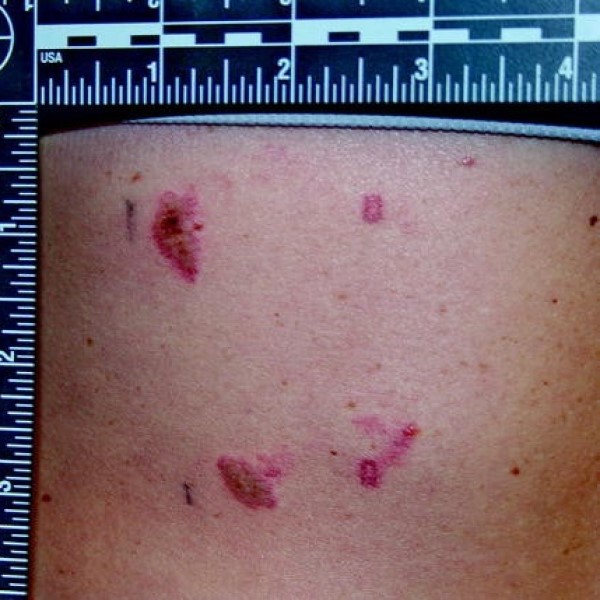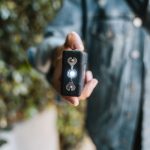Introduction
Stun guns have become increasingly popular as self-defense tools in recent years, particularly among individuals looking for reliable methods to protect themselves. As personal safety continues to be a priority for many, understanding the implications of using devices like stun guns is essential. One important aspect of this knowledge includes recognizing stun gun marks. These marks can appear on the skin after a stun gun has been deployed, leading to numerous questions about their nature, effects, and safety.
This guide will delve into everything users need to know about stun gun marks. We will explore what these marks look like, how they may affect users, and essential tips for recovery and care. Furthermore, we will discuss legal considerations regarding stun gun ownership to ensure that users are well-informed about their rights and responsibilities. By staying informed about the effects of stun guns, users can make better decisions regarding their personal safety tools and how to use them effectively.

Understanding Stun Gun Marks
Definition of Stun Gun Marks
- What They Are: Stun gun marks refer to the temporary skin markings that may occur after a stun gun is used. When a stun gun delivers an electric shock, it can create visible changes on the skin in the area of contact.
- Formation: The marks can vary in appearance and severity, depending on several factors such as the duration of contact, the voltage of the stun gun, and the skin type of the person affected.
Appearance of the Marks
Typical Characteristics
- Appearance of Marks: Stun gun marks typically appear as red or purplish spots on the skin. This skin reaction serves as a physiological response to the electrical shock delivered by the stun gun. These marks can vary quite a bit in appearance based on several factors.
- Factors Influencing Intensity: The intensity of the marks can differ based on two key factors: the duration of contact with the stun gun and the individual’s skin sensitivity. For instance, a longer exposure might lead to more pronounced or intense marks.
- Individual Variability: Each person’s skin is unique, and factors such as skin type, thickness, and color can affect how stun gun marks manifest. Some individuals may experience minimal changes, while others may have prominent visible marks.
- Location of Contact: The location where the stun gun makes contact can also contribute to the characteristics of the marks. Areas with thinner skin (like the inner arm) may show more noticeable marks than denser areas (like the thigh).
Color Changes
- Initial Reaction: When first receiving a shock from a stun gun, the affected skin area often turns bright red. This immediate change indicates that blood flow has increased to the area as a response to irritation or trauma caused by the electric shock.
- Progression of Color: Over time, the initial bright red color can transition to darker shades. Marks may turn to shades of purple, blue, or even black as blood vessels beneath the skin react to the shock. This progression mirrors the development of a bruise, which evolves as the body heals.
- Understanding Bruising Mechanism: The color change occurs because of a process called hematoma formation, where blood leaks from damaged vessels into surrounding tissues. As the body starts to heal, those colors will gradually fade.
- Duration of Color Changes: The transition from bright red to darker tones can typically occur within hours after the stun, depending on the individual’s healing response. This timeframe can vary, so different people may notice color changes at different rates.
Common Reactions
- Pain and Discomfort: Users may experience short-term pain following the use of a stun gun. This pain can range from mild discomfort to a sharp sensation depending on the individual’s pain threshold and the intensity of the stun.
- Tingling Sensation: In addition to pain, many users report experiencing a tingling sensation around the affected area after the shock. This tingling is a normal physiological response as the nervous system begins to recover from the impact of the electrical shock.
- Duration of Symptoms: Generally, these reactions are temporary and should fade quickly. Most users find that pain and tingling subside within minutes to a few hours as the body’s nervous system returns to its normal state.
- Variability Among Users: It is important to note that reactions can vary greatly among individuals. Some people may have a stronger reaction due to their sensitivity, while others might experience little to no discomfort.
- When to Seek Medical Attention: If pain persists beyond a few hours or if there are significant changes in skin condition, such as severe swelling or signs of infection, seeking medical advice is recommended. This caution ensures any underlying issues are addressed promptly.
Does a Stun Gun Leave Marks?
- Common Occurrence: While stun guns can leave marks, not every instance results in visible signs on the skin. Whether marks appear may depend on the electricity’s intensity and the length of deployment.
- Factors Influencing Visibility: The likelihood of developing visible marks increases with prolonged contact and higher voltage usage. For example, using a stun gun for an extended period on sensitive skin can lead to more pronounced markings.
- Distinguishing Marks from Injuries: It is essential for users to differentiate between superficial marks and more severe injuries. In rare situations, excessive use or misuse may lead to more serious consequences. Therefore, proper education on usage is crucial.
What Do Stun Gun Marks Look Like?
- Variety of Appearances: Stun gun marks can vary widely among users. They typically appear as red spots or small welts, but can also present as larger, more pronounced bruises depending on the circumstances of use.
- Variability in Healing: The healing time for stun gun marks can range from a few days to several weeks. During this period, users may notice changes in color and swelling as the body heals.
- Monitoring Changes: Users should monitor the affected area for any signs of prolonged discomfort or unusual reactions. If these conditions persist, seeking medical attention is advisable to prevent complications.
Can You Get a Scar from a TASER?
- General Healing Process: In most cases, properly used stun guns do not typically cause permanent damage or scarring. Standard marks resulting from the use of a stun gun usually heal without lasting effects.
- Risk of Scarring: However, improper use, such as excessive contact or targeting sensitive areas, can potentially lead to more severe injuries and increased scarring risk.
- When to Consult a Professional: Users should seek medical advice if they notice unusual changes in the skin or if the marks do not begin to heal within a reasonable timeframe. Consulting with a healthcare professional can provide clarity and ensure appropriate action is taken if necessary.
Safety Precautions When Using a Stun Gun
- Read and Understand the Manual: Before using a stun gun, it is vital to read the user manual thoroughly. This document contains important safety information, technical specifications, and instructions on proper usage.
- Regular Maintenance: To ensure the stun gun functions properly, conduct regular maintenance and testing. Check the device periodically, especially before taking it out, to make sure it is charged and in working condition.
- Know Your Environment: Being aware of your surroundings is crucial, especially when you carry a stun gun. Familiarize yourself with local laws and public spaces where carrying a stun gun may not be permitted.
- Use Your Device Responsibly: Stun guns should only be employed as a last resort. Always try to de-escalate a situation before resorting to self-defense. Understanding when to use your stun gun can make a crucial difference.
- Legal Awareness: Be informed about your local regulations concerning stun guns. Laws regarding ownership, usage, and carrying these devices can vary widely, making it essential to know your rights and responsibilities.
Are Stun Guns Illegal to Carry?
- Variances in Legislation: Stun gun laws differ significantly between countries and states. While some jurisdictions permit the possession and use of stun guns without restrictions, others impose strict guidelines.
- Checking Local Requirements: Always check local laws to understand what is permissible in your area. This includes knowing about permits, restrictions, and any specific rules regarding legal ownership of stun guns.
- Documentation and Permits: In some places, you may need to obtain a permit or register your stun gun. Ensure that any required documentation is current and accessible, as failing to comply could result in legal issues.
Conclusion
In conclusion, understanding stun gun marks is vital for anyone considering or currently using a stun gun for personal defense. By recognizing the characteristics of these marks, being aware of their implications, and implementing safety precautions, users can maximize the effectiveness of stun guns while ensuring personal safety.
Education about the effects, legal considerations, and proper usage is essential for all stun gun owners. By understanding these aspects, individuals can confidently use this tool as part of their self-defense strategy. If you own a stun gun or are contemplating one, staying informed about its implications will empower you to make informed decisions. Embrace the confidence that comes with being prepared, and remember that knowledge is your best ally when it comes to personal safety. Stay proactive and practice safety!




